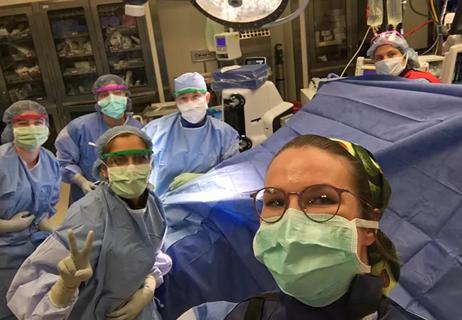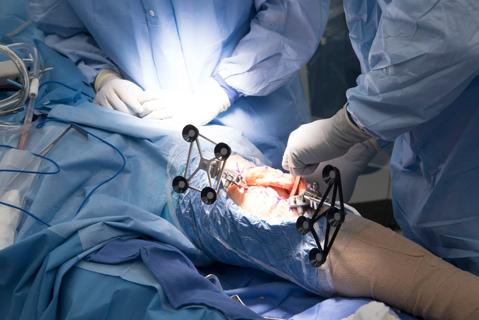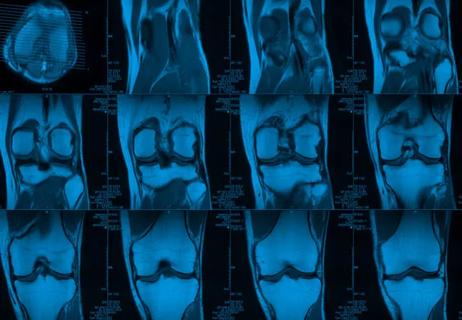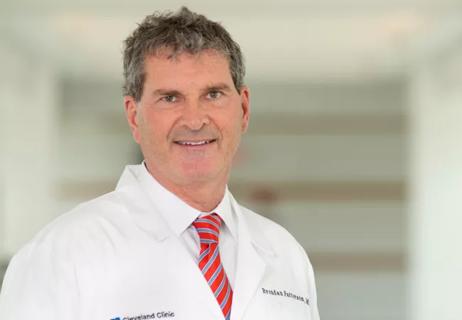Advertisement
Orthopaedic team launches the MATTER program

By Dominic King, DO; Jonathan Schaffer, MD, MBA; and Stephen Pinney, MD
Advertisement
Cleveland Clinic is a non-profit academic medical center. Advertising on our site helps support our mission. We do not endorse non-Cleveland Clinic products or services. Policy
In this new era of focusing on patient experience, it is essential that clinicians use communication technologies to provide digital touch points for our patients. Additionally, the migration from the paper medical record to the digital record has provided significant benefits in patient care.
However, for optimization of the care process, the specific daily workflows of each of the musculoskeletal care subspecialties need to be observed, incorporated and further refined to increase the benefits for both patients and care providers. Managing the challenges of the electronic health record while leveraging existing technologies is imperative so that stakeholders are provided innovative ways to enhance access to and the safety, quality, effectiveness, efficiency and reproducibility of our evidence-based orthopaedic care at Cleveland Clinic.
Addressing this issue in the Department of Orthopaedic Surgery has led to the establishment of a working group consisting of musculoskeletal care providers from within the different subspecialty areas. The first of the working group’s projects is the MATTER program — an acronym standing for Musculoskeletal Access, Triage, Treatment, Education and Retention. MATTER was established to develop technologies and workflows to enhance and optimize patient access and care across the musculoskeletal continuum.
The goal of the MATTER team is to improve every aspect of the clinical experience, from episode-of-care facilitation, patient education and appointment scheduling to assisting the patient to a full recovery. Using what are commonly referred to as medical informatics methodologies and technologies, the MATTER team was created to manage these developments within specific clinical care challenges. Focusing specifically on orthopaedics and musculoskeletal care, the application of informatics provides the bridge between health information technologies and orthopaedic patient care. Orthopaedic informatics involves providing a rational basis to answer the following questions:
Advertisement
1. How can we assemble a dynamic structure to outline the way clinical evidence is pooled, communicated and applied to orthopaedic care?
2. How can we develop organizational processes and
structures that minimize the resources we use and maximize the benefits we deliver?
3. What tools and methods need to be developed
to help achieve these aims in a manner that is practicable, testable and in keeping with the fundamental goal of providing world-class care to our orthopaedic patients?
As an example of our current technology developments, our group understands that there are certain situations that require more emergent triage, scheduling and management. A pediatric patient with a fracture is one such example. To address this need, the MATTER team has collaborated with members of the Center for Pediatric and Adolescent Orthopaedic Surgery to pilot a web-based Scheduling Triage and Access Tool (WebSTAT) that enhances the accuracy, appropriateness and efficiency of scheduling a pediatric patient with a fracture. Often, getting that initial appointment is unnecessarily anxiety provoking. This web-based solution provides efficient, immediate and appropriate scheduling with a pediatric orthopaedic specialist, coupled with patient education materials.
As the pilot program is completed and the tool is validated, the MATTER team will expand the solution across the other centers and sections in orthopaedics. MATTER represents a critical first step in continuing the transformation of the clinical experience for orthopaedic patients.
Dr. King is a sports medicine and interventional orthopaedic physician in the Sports Health Center and Joint Preservation Center.
Dr. Schaffer is Managing Director of eCleveland Clinic in the Information Technology Division and a joint and reconstructive orthopaedic surgeon in the Department of Orthopaedic Surgery.
Dr. Pinney is an orthopaedic surgeon in the Center for Foot and Ankle Surgery.
Advertisement
Advertisement

New digital tool allows parents to self-schedule fracture care for their children

Diversifying the specialty starts with earlier exposure for female students

Improvements in patient care, research and education set the stage for a promising future

The longitudinal study will examine long-term risk factors for osteoarthritis after ACL injury

Introducing Brendan M. Patterson, MD

Study examines pre- and postoperative benefits

The short answer from Orthopaedic Surgery Chairman Michael A. Mont, MD

Review of nearly 10,000 patients yields data on ideal effective dose for lowest risk of complications